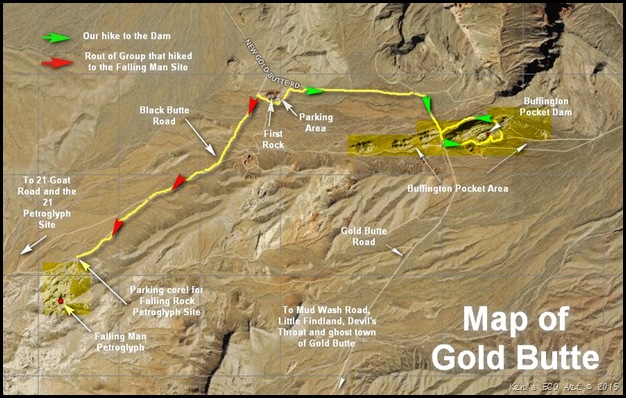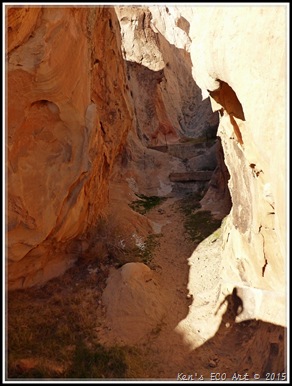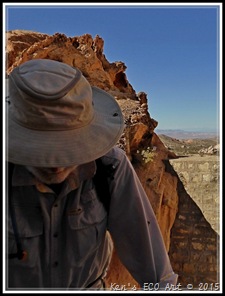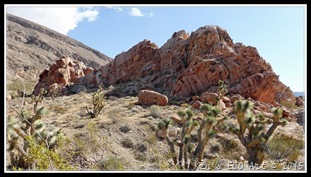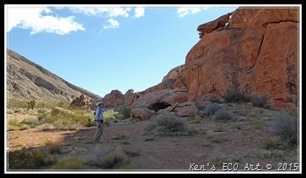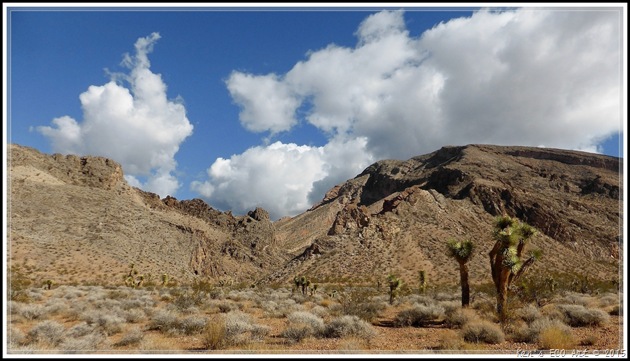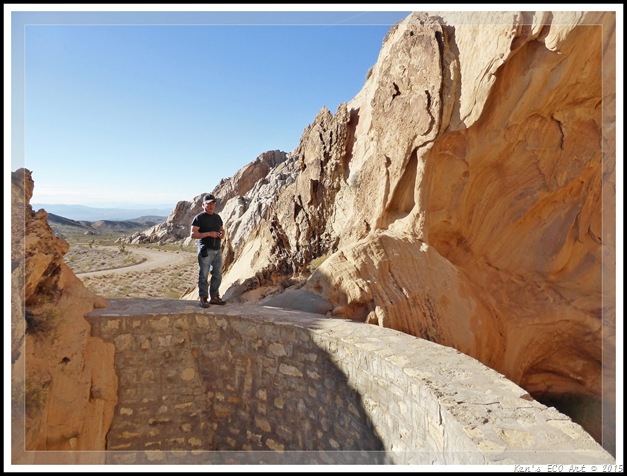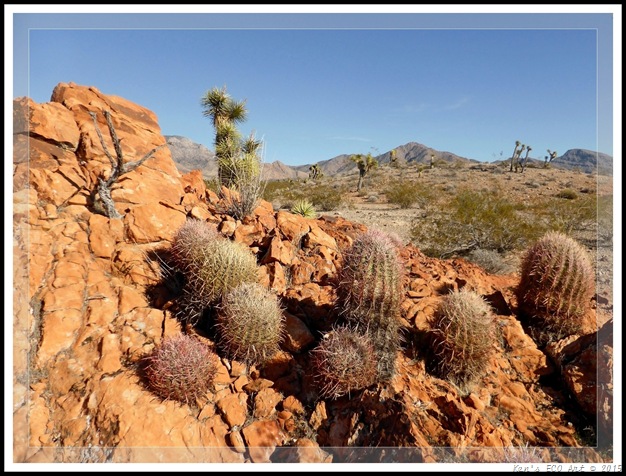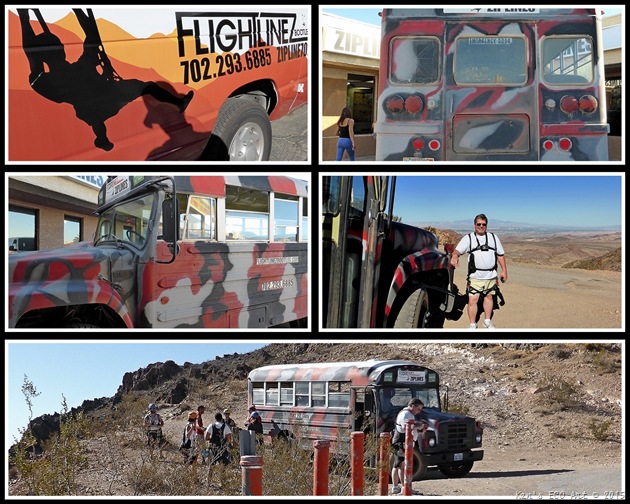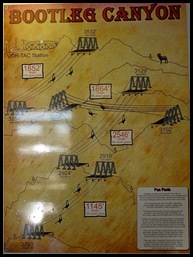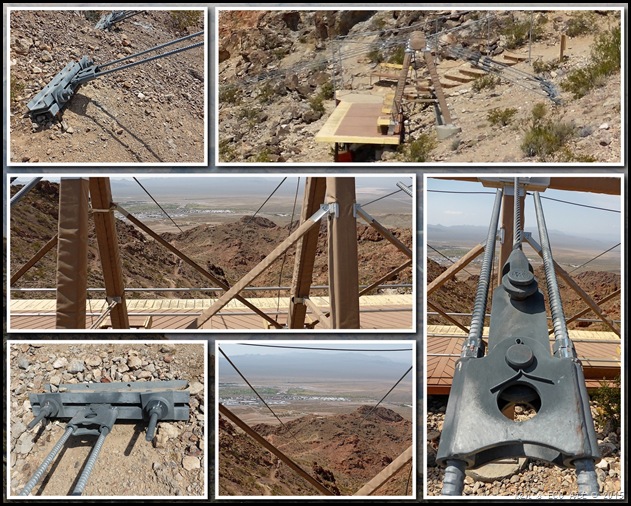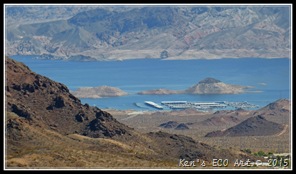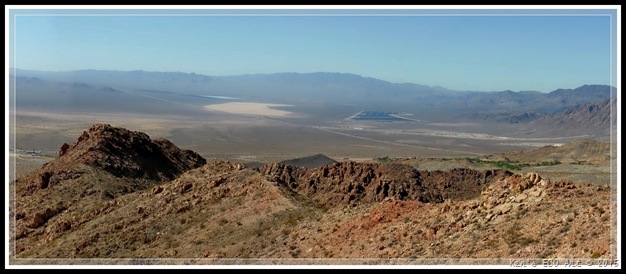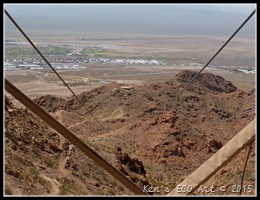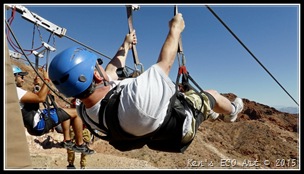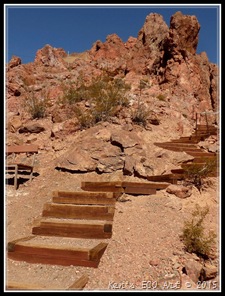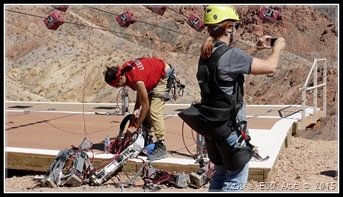{Click on an image to enlarge, then use the back button to return to this page}
This page last updated on 04/13/2017
 |
| (Fig. 01) |
|
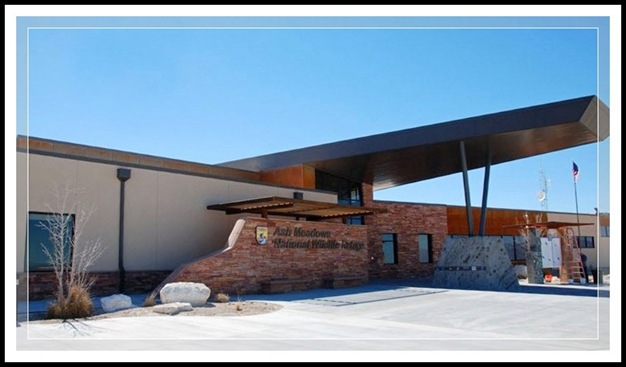 |
| (Fig. 02) |
|
| Visitor Center (Fig. 01) Description: Opened in February of 2015, this brand new $10 million facility offers visitors to Ash Meadows a chance to discover all the wildlife and wonder of the largest remaining oasis in the Mojave Desert. On average, up to as many as 75,000 tourists come to Ash Meadows every year for a glimpse of the pupfish.. A two-story facade of rust-covered cortene marks front (Fig. 02) and back entrances near the center of the building (Fig. 03). The rest is encased in double-walled steel-and-brick to help keep 11,000 square-feet of exhibit, office and bookstore space cool in the summer and warm in the winter. A new boardwalk (Figs. 04-06) added as part of the center’s construction helps guide visitors from the back of the building toward Crystal Spring (Fig. 07) and other ancient water formations that support the area’s fragile habitat. The Refuge is open daily from sunrise to sunset. The refuge visitor center is open daily from 9 a.m. to 4:30 p.m. Admission is free. |
 |
| (Fig. 03) |
|
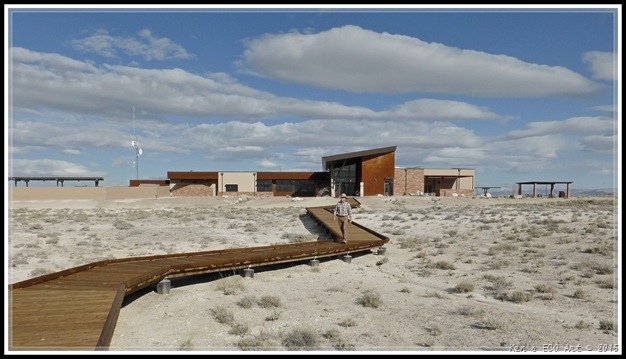 |
| (Fig. 04) |
|
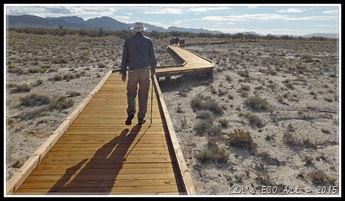 |
| (Fig. 05) |
|
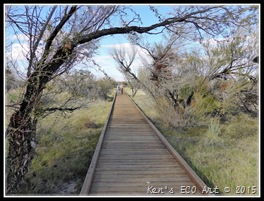 |
| (Fig. 06) |
|
|
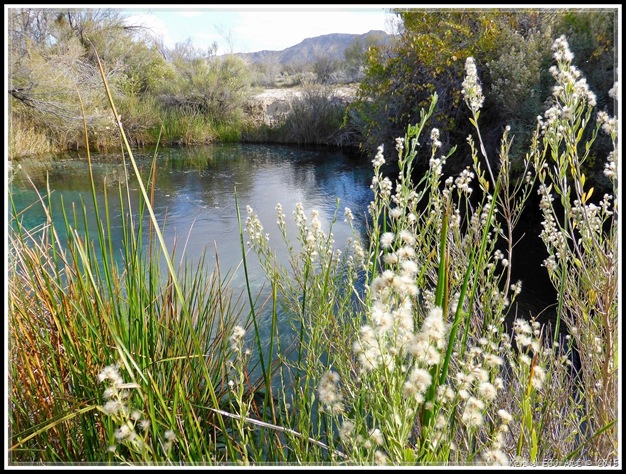 |
| (Fig. 07) |
|
|
Wildlife Refuge Description: Ash Meadows encompasses 23,000 acres with more than 30 aquifer-fed springs that pump more than 10,000 gallons per minute, making the refuge one of the most water-rich resources in Nevada. The refuge is home to at least 26 endemic plant and animal species, the highest concentration of native species in the continental United States that can only be found here. Ash Meadows is a biodiversity hot-spot located right next to Death Valley National Park, one of the hottest and driest places on Earth! It is also home to Fourteen of those species are classified as endangered, having narrowly averted the threat of extinction at the hands of peat harvesters, cotton farmers, ranchers or housing developers. Ash Meadows National Wildlife Refuge is a haven for wildlife, especially rare fish, plants, snails, and insects. Water bubbles up from underground into clear spring pools as silvery blue and grayish green pupfish dart between swaying strands of algae. Pebbled streams gurgle from small hillside springs, sheltering tiny beetles and snails. The water is warm, the air moist, in contrast to the surrounding Mojave Desert. There are coyotes, black-tailed jackrabbits, desert cottontails, and white-tailed antelope squirrel. Desert bighorn sheep are occasionally observed at Point of Rocks and Devil's Hole. The black-tailed jackrabbit was my only sighting on today's visit ... Black-tailed Jackrabbit. Reptiles and amphibians are most visible during the spring and fall. Five amphibians and 20 reptiles are known to occur on the refuge. Toads are most visible right after spring and summer rains, when they become very active feeding and breeding. Woodhouse toads are the most common species observed on the refuge. Look for large chuckwalla lizards on the rocky slopes near Devil's Hole and Point of Rocks during the early spring. Snakes are also seen more often during the spring and early fall and become more nocturnal during the heat of mid-summer. Coachwhip and gopher snakes are two of the more common snakes seen at Ash Meadows.Over 239 different species of birds have been recorded on the refuge. Migration periods are best for greatest diversity and numbers. Spring migration usually occurs during April and May, and fall migration from mid-August through September. During the winter, marshes and reservoirs support the largest variety of water birds. Mesquite and ash tree groves at Refuge Headquarters and Point of Rocks harbor resident and migratory birds year-round, including typical Southwestern species such as crissal thrasher, verdin, phainopepla, and Lucy's warbler. A refuge bird list is available at the visitor center.
|
10/29/2015 Trip Notes: This was my second visit to the Ash Meadows National Wildlife Refuge with the rock-hounds from Henderson’s Heritage Park Senior Center. Upon our arrival we drove first to the new Visitor Center (Figs. 02 & 03). Inside we first watched a movie (Fig. 08) on the history of the Ash Meadows National Wildlife Range. After the movie we toured the many displays, inter-active exhibits, dioramas, and the small gift shop (Fig. 09). We were all amazed at how well everything had been done. We then learned that the previous week they had experienced the worst rain storm since the wildlife range was created, more than 2 inches of rain, almost as much as their yearly rainfall in one storm. It flooded the entire area and washed out many of its roads. Everything north of the visitor center including the road to the Crystal Reservoir were all closed. When we all took the one mile boardwalk out to the Crystal Spring (Fig. 07 above). While the majority of the group visited the Devil's Hole site, hope of the Pupfish, Blake and I hike out to the Crystal Reservoir (Fig. 10). Next we all drove to the Point of Rocks Spring (Fig. 11). where we walked the boardwalk and had lunch before heading home. Off to the right of the parking area (Fig. 12) was one of the largest ash trees I have ever seen. It was massive. I cant even imagine how old it was. Even though our visit was hampered by the road wash outs, and that heavy winds impacted out hiking, we still have an enjoyable morning.
|
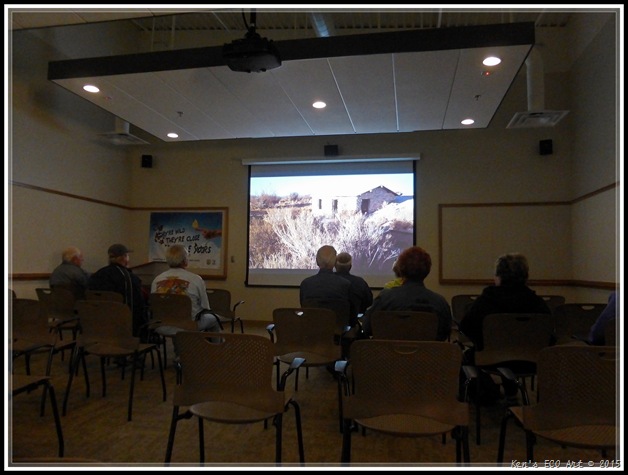 |
| (Fig. 08) |
|
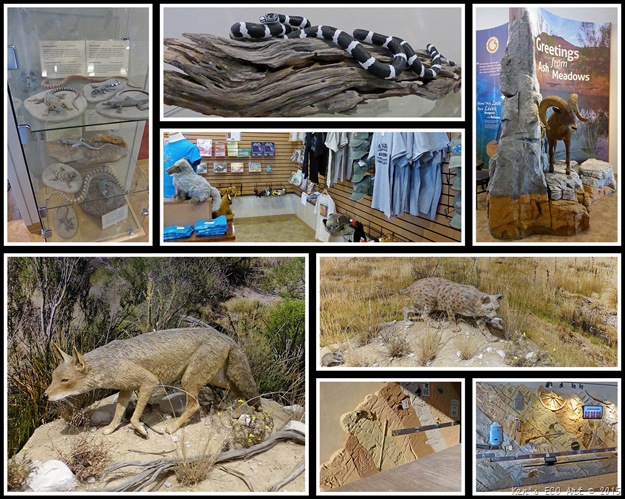 |
| (Fig. 09) |
|
 |
| (Fig. 10) |
|
 |
| (Fig. 11) |
|
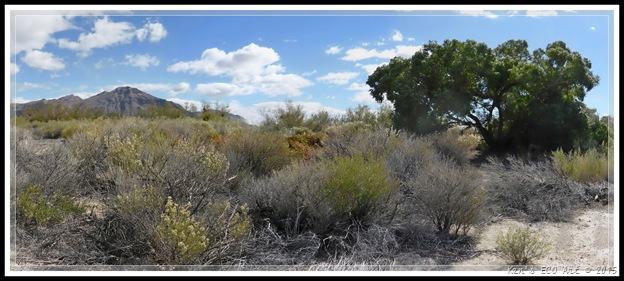 |
| (Fig. 12) |
|
 |
| (Fig. 13) |
|
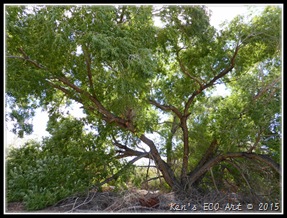 |
| (Fig. 14) |
|
|
|
|
|
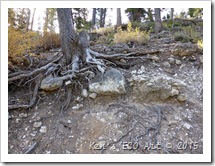 On a recent trip to the Deer Creek Picnic area trails off NV-158 (Deer Creek Rd) near the steep flanks of Mummy Mountain in the Mount Charleston Wilderness Area, I found a large boulder partially buried under a large tree on the side of the road that was chocked full of seabed fossils. Click for more pictures … Seabed Fossils Along Cougar Ridge Trail Road.
On a recent trip to the Deer Creek Picnic area trails off NV-158 (Deer Creek Rd) near the steep flanks of Mummy Mountain in the Mount Charleston Wilderness Area, I found a large boulder partially buried under a large tree on the side of the road that was chocked full of seabed fossils. Click for more pictures … Seabed Fossils Along Cougar Ridge Trail Road. On 09/18/2015 I visited the Hoover Dam with my brother Tom that was visiting from Lake Tahoe. Even though this was about my seventh visit to the Dam, I had never put together detailed page on the Hoover Dam. In the creation of this page, I used pictures from all of my previous visits. Today we took both the Dam Tour and the Power Plant Tour. Click this link for pictures and a detailed description of this visit … Hoover Dam Visit & Tours.
On 09/18/2015 I visited the Hoover Dam with my brother Tom that was visiting from Lake Tahoe. Even though this was about my seventh visit to the Dam, I had never put together detailed page on the Hoover Dam. In the creation of this page, I used pictures from all of my previous visits. Today we took both the Dam Tour and the Power Plant Tour. Click this link for pictures and a detailed description of this visit … Hoover Dam Visit & Tours.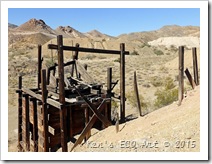 09/19/2015 Trip Notes: On 09/19/2015 I decided to rent a jeep and drive to Eldorado Canyon and the town of Nelson in search of old gold and silver mines. After reaching Nelson we proceeded to the area behind the town to the Black Hawk and Carnation mines. After exploring the various mines, shafts and audits in this area we ended up at the Techatticup Mining Camp for a tour of the old Techatticup gold mine. Click here for pictures of today’s trip … Nelson Nevada Mines.
09/19/2015 Trip Notes: On 09/19/2015 I decided to rent a jeep and drive to Eldorado Canyon and the town of Nelson in search of old gold and silver mines. After reaching Nelson we proceeded to the area behind the town to the Black Hawk and Carnation mines. After exploring the various mines, shafts and audits in this area we ended up at the Techatticup Mining Camp for a tour of the old Techatticup gold mine. Click here for pictures of today’s trip … Nelson Nevada Mines. On 10/01/2015 Blake Smith and I headed to Mt Charleston for some “cooler” hiking. When we got there it was only 48 degrees. We decided to drive back to the Resort at Mt Charleston for breakfast before starting hiking. The first place we landed was at Deer Spring Creek Picnic Area, one of the stops along Deer Spring Road. By the time we got there it was beautiful in the mid-60’s. Here is a link to the page on this hike … Deer Creek Picnic Area. After hiking this area we went on to Long Lee Meadow near the upper end of Lee Canyon Road. My the time we go there the temperatures were in the 70's, much warmer than I first stop earlier in the morning. Click this link to see pictures from this area ... Long Lee Meadows.
On 10/01/2015 Blake Smith and I headed to Mt Charleston for some “cooler” hiking. When we got there it was only 48 degrees. We decided to drive back to the Resort at Mt Charleston for breakfast before starting hiking. The first place we landed was at Deer Spring Creek Picnic Area, one of the stops along Deer Spring Road. By the time we got there it was beautiful in the mid-60’s. Here is a link to the page on this hike … Deer Creek Picnic Area. After hiking this area we went on to Long Lee Meadow near the upper end of Lee Canyon Road. My the time we go there the temperatures were in the 70's, much warmer than I first stop earlier in the morning. Click this link to see pictures from this area ... Long Lee Meadows. 

